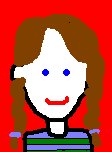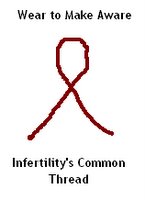by Eric
Before any decision can be made as to how to tell a child or individual that they were conceived via donor conception, the parent must first decide that they themselves are ready to tell. I say this not to provide the parent ammunition to procrastinate but more so to ensure that they are committed to telling. One of the few things I have learned about parenting is that kids can read the mood you are in and if you are not committed to telling they may assign a negative connotation to the news your are giving them that may very well color their perception forever of their conception story.
When I was asked to write this post I knew I was asked to do so based on my commitment to this issue and my knowledge of the resources out there on this topic. Because I am only a parent and not an expert on these matters I encourage you to seek out the sites and books I recommend as resources as no one book, pamphlet, or website site is tailored to meet your individual needs and you must yourself decide what and how you can begin to tell the child their story.
The one general proposition that all the experts have come to agree on is that the earlier the individual learns their story the better. In my own case, we began telling our son at age two and we remind him of his story at various points throughout the year and at various life events where it is appropriate to do so. Our daughter is about 2 ¼ years younger than her brother and started hearing the story almost from her birth as it was already a normal part of our routine to refer to the donor when our son questioned how his new baby sister had come into the world. I must be honest--even as they each approach ages 5 and 3, they do not fully understand the donor’s role but they do know a common donor was integrally involved with their creation / conception and their half sibling is here due to the same donor.
No child understands what the “birds and the bees” story fully represents at these young ages but we tell this story to lay the groundwork. Obviously for older children, young adults or older individuals this approach is inappropriate and for those scenarios I am not equipped to provide useful advice other than complete and utter honesty and the decision to not hold anything back.
Resources
The UK Donor Conception Network has produced what I believe to be the most comprehensive program titled “Telling & Talking” which is comprised of 4 pamphlets and a DVD film to assist parents in their decision to tell and how to tell. The pamphlets are designed for 4 distinct age ranges 0-7 years old, 8-11, 12-16, and 17 years and older. Each pamphlet is free and can be downloaded as a PDF file right from the DCN website. The companion DVD offers a 45 minute film of 10 families sharing their experiences of “telling.”
http://www.donor-conception-network.org/tellandtalk.html
A website put up by the Harvard Medical School for Mental Health and Media
titled “Talking to Children About Assisted Reproductive Technology” offers a mix of commentary and instant audio clips from varying families offering their experiences. The site, beyond offering general advice, focuses on two distinct age groups--kids and teens.
http://www.artparenting.org/index.html
Donor Sibling Registry
http://donorsiblingregistry.com/FaqPage.php
Books for Reading with Children:
- Before You Were Born… Book Series from XY and Me Books (Janice Grimes) http://www.xyandme.com
- My Story / Our Story Series from the Infertility Research Trust http://www.dcnetwork.org/ (link through Online Bookshop)
http://www.infertilitynetwork.org/html/store.asp - Tell Your Child Series – Rozanne Nathalie http://www.tellyourchild.com and
http://www.beaverspondpress.com - Let Me Explain: A Story About Donor Insemination by Jane T. Schnitter and Joanne Bowring. Perspectives Press, 1995.
- Mommy Did I Grow in Your Tummy? Where Some Babies Come From by Elaine Gordon. E. M. Greenberg Press, 1992.



























1 comment:
In August 2007 Carolina Nadel's book "Mommy, Was Your Tummy Big?" became available in hardcover on Amazon.com. Its story - for children from donor eggs - can also be viewed in its entirety, free, at http://www.carolinanadel.com/DonorEgg/index.html
Post a Comment